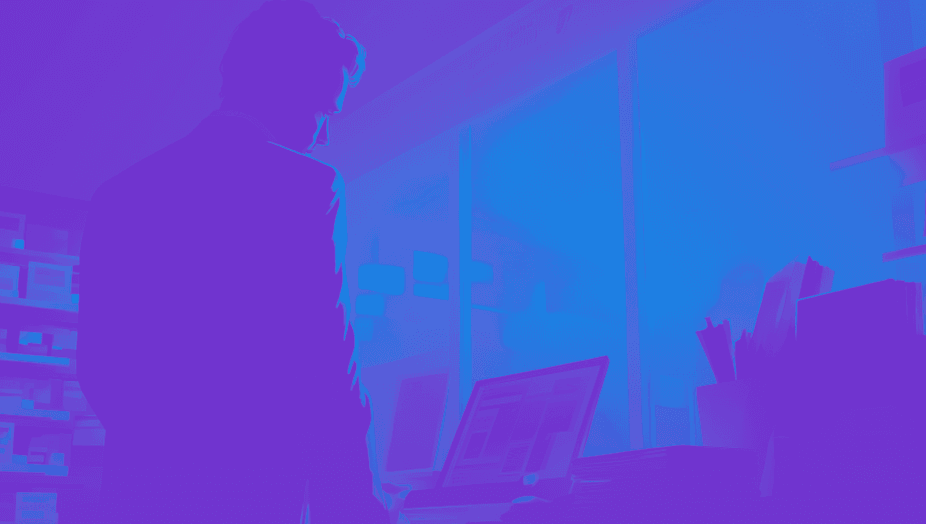
In today’s digital-first world, offering a modern way to pay is no longer a luxury — it is a necessity. Customers expect fast, secure and convenient options when shopping online, and e-commerce merchants who fail to deliver risk losing them at checkout. Embracing the right modern payment methods can help online businesses unlock higher conversions, reduced fees and better customer loyalty.
This guide explores the latest payment technology available for online retailers. From open banking and buy now, pay later to platforms revolutionising specific regions of Europe, like BLIK, and mobile wallets, we break down the most important modern methods of payment and explain how each one can work for your business.
Key Takeaways: Modern payment methods are transforming how online businesses accept and manage payments. Here are the key takeaways:
|
What Are Modern Payment Methods? Evolution of Payments
A modern payment method is any tech-powered, digital way to pay or send money quickly and easily. Over the past 20 years, we’ve gone from using mostly cash and chip and PIN card machines to expecting smooth, digital checkouts on our phones, laptops and even smartwatches.
When online shopping took off in the early 2000s, we saw the first wave of payment gateways that safely handled card and bank details. Not long after, contactless cards and tap-to-pay phones made things even faster. Then Apple Pay and Google Pay came along, letting us store all our cards in one place and pay with a quick fingerprint or face scan.
More recently, open banking has started changing the game. Thanks to new regulations in Europe (like PSD2 and the forthcoming PSD3), third-party apps can now move money directly between bank accounts on your behalf. This means faster payments, lower fees, and fewer chargebacks for businesses. At the same time, buy now, pay later services let shoppers spread out payments without interest, and crypto offers a more flexible, global option for customers who are into digital currencies and Web3.0 products.
If you run an online business, picking the right modern payment system really matters. A good modern payment system in ecommerce needs to be fast, safe and cost-effective, not just for you, but for your customers too. And with more new payment technologies popping up all the time, from QR code payments to built-in BNPL options, there’s no shortage of ways to build a smooth, brand-friendly checkout that keeps customers coming back.
Top 6 Modern Payment Methods
Open Banking: The Best Modern Payment Method?
Among the most transformative modern payments today is open banking. This system allows consumers to authorise payments directly from their bank accounts without needing cards or third-party intermediaries.
Open banking is more than just a modern payment method — it is a new way to pay that is reshaping how money moves online. By reducing fees, eliminating chargebacks, and supporting instant settlement, it offers one of the most efficient modern payment system available today. According to Statista, there are roughly 63.8 million open banking users in Europe (as of 2024). Another study shows that there are 13.3 million active open banking accounts in the UK alone (as of March 2025).
Open banking is powered by secure APIs that connect banks with licensed third-party providers. These connections are regulated and heavily protected by financial authorities, ensuring that data and money are handled safely. In the UK and Europe, open banking is supported by legislation such as the revised Payment Services Directive, or PSD2, which requires banks to make this functionality available to customers and businesses (with PSD3 coming into effect in 2026).
For online merchants, open banking offers several benefits over traditional payment methods. Payments are settled instantly or within minutes, reducing cash flow delays. Since there are no card networks involved, transaction fees are significantly lower. It also eliminates the risk of chargebacks, making it a more stable and predictable payment system for businesses.
Noda is a revolutionary platform that harnesses the power of open banking to offer fast, secure and user-friendly checkouts. It connects with over 2,000 banks across 28+ countries in Europe (and beyond), giving merchants access to a pan-European customer base through a single integration.
Merchants who implement Noda gain access to real-time payments, a comprehensive merchant dashboard and frictionless plug-and-play integrations for platforms like WooCommerce, Magento, OpenCart and PrestaShop. This represents a genuine example of modern fast pay, built for the future of e-commerce.
Buy Now Pay Later: Flexible Modern Payment System in E-commerce
Buy now pay later (BNPL) services like Klarna and Clearpay allow shoppers to split payments into interest-free instalments. This is a popular modern payment method that helps improve conversion rates and average order values.
BNPL appeals to customers who want flexibility and convenience at the checkout. For merchants, this modern payment system in e-commerce offers an excellent tool for upselling and customer retention.
However, higher fees may apply, so merchants need to assess whether BNPL fits their pricing model. Still, it remains one of the most widely adopted modern methods of payment, particularly in retail and lifestyle sectors.
QR Payments and Pay by Link: A Modern Fast Pay Experience
Although QR payments and pay-by-link services are not payment methods in themselves, they are an increasingly popular delivery mechanism for modern payments. Merchants can send secure payment links or display QR codes, allowing customers to pay instantly using their phone or device.
Noda’s Instant Payment Links allow businesses to offer a seamless, modern fast pay solution, making it ideal for service-based industries, social selling and remote billing.
This new payment platform functionality does not require customers to download an app or log in, providing a frictionless, secure experience that supports higher conversion rates.
Local Alternatives: BLIK, Swish and Other Market-Specific Solutions
Expanding internationally means offering more than just global payment methods. Merchants must understand the types of modern payment systems that dominate local markets.
In Poland, BLIK is a new payment method that has become one of the most widely used in the country. Based on mobile banking apps, BLIK allows users to pay online, in stores, withdraw from ATMs, or transfer money using unique one-time codes, or send money to other users (or businesses) with just their mobile phone number needed.
BLIK is built on real-time bank transfers, making it both secure and fast. It is an excellent example of how localised modern payment systems can achieve massive adoption by combining convenience, security and mobile-first design.
In 2024, Polish consumers completed over 2.4 billion BLIK transactions (an increase of 37 %) with more than 1.2 billion of those in e‑commerce alone, representing nearly half of all BLIK payments. Currently, 18.5 million Poles use BLIK for transactions, and in 2024 the number of transactions exceeded 2.4 billion, which means 64 Blik transactions per capita during that year.
Similarly, Swish in Sweden, MobilePay in Denmark, and iDEAL in the Netherlands are modern payment systems that dominate in their regions, offering peer-to-peer transfers and merchant payments through direct bank connectivity.
Cryptocurrency: A Niche but Growing New Way to Pay
Although still considered a niche, crypto is a modern payment method gaining traction. Customers can use digital currencies like Bitcoin or Ethereum to pay for products and services, often with lower transaction fees and no intermediaries.
For merchants dealing with global audiences or tech-forward consumers, accepting crypto offers a new way to pay and demonstrates innovation. However, volatility and limited adoption should be taken into account when deciding on integrating it into your e-commerce website.
Digital Wallets: Modernity in the Mainstream
Apple Pay, Google Pay and similar mobile wallets have become part of the everyday checkout experience. They are a mainstream yet essential modern payment method that simplifies transactions by storing card details securely and allowing one-touch authentication.
These wallets are driven by the latest payment technology and are ideal for mobile-first experiences. For merchants, they reduce cart abandonment and improve conversion rates.
Even though not a separate method itself (digital wallets still rely on traditional debit and credit cards to complete their transactions), wallets still count among the most effective ways to pay due to their high security standards and ease of use.
Why It Matters to Get Payments Right for Your E-Commerce Business
The new payment technologies powering today’s e-commerce landscape are not just about novelty. They solve real problems for both merchants and customers.
A modern way to pay increases user satisfaction, reduces checkout friction, improves cash flow and strengthens brand trust. Whether it is through a new payment platform like Noda or a locally trusted solution like BLIK, merchants have more tools than ever to meet customer expectations.
The modern payment system you choose should match your market, business model, and customer demographics. No single method suits all businesses, but combining several of the latest payment technology options ensures your checkout is inclusive, flexible, conversion-focused, and most importantly – does not disappoint your customers and make them abandon carts.
Noda: Leading the Charge in Modern Payments
Noda is more than just a new way to pay. It is a complete modern payment platform for businesses looking to stay competitive and cost-efficient.
Built on open banking, Noda’s infrastructure enables instant payments with no hidden fees, minimal fraud risk, and a user experience designed for today’s online shopper. It supports modern fast pay through Pay by Link and offers scalable solutions for merchants across Europe.
Whether you are an Internet marketplace, e-commerce retailer, digital agency, or a SaaS business, Noda delivers a modern payment system in e-commerce that puts you ahead of the curve.
Why Choose Noda As The Modern Payment Method For Your Business?
- Broad Coverage
Noda directly connects more than 2000 banks in 28+ countries in Europe and beyond, offering real-time account-to-account (A2A) payments and account data access through PSD2-compliant APIs. - Instant payments, extremely low fees
Our open banking rails allow merchants to receive direct bank payments instantly, while keeping transaction fees as low as 0.1%, with no card networks and no hidden costs involved. - Plug-and-play for eCommerce
Get started fast with Noda’s ready-made modules for WooCommerce, Magento, OpenCart, Prestashop, or go custom with our clean API. - Multi-rail support
Combine open banking, cards, Apple Pay, and Google Pay in one smooth checkout flow, boosting conversion and customer choice. - No-code tools
Accept payments via links and QR codes without writing a line of code, perfect for fast-growing e-commerce businesses and offline-to-online use cases. - Dedicated support
Our open banking onboarding and dedicated personal manager ensures your integration is seamless and tailored to your business’s needs and is available via phone, email or online chat.
Ready to upgrade how your business gets paid? Discover a smarter, faster and cheaper new way to pay — book a demo with Noda today.
Latest from Noda

GoCardless Review 2025: What Merchants Need to Know

Alternative Payment Methods UK: Your Complete Guide to Modern Payment Solutions

Plaid Review for Merchants: Data, Payments, Pros & Cons, and More


